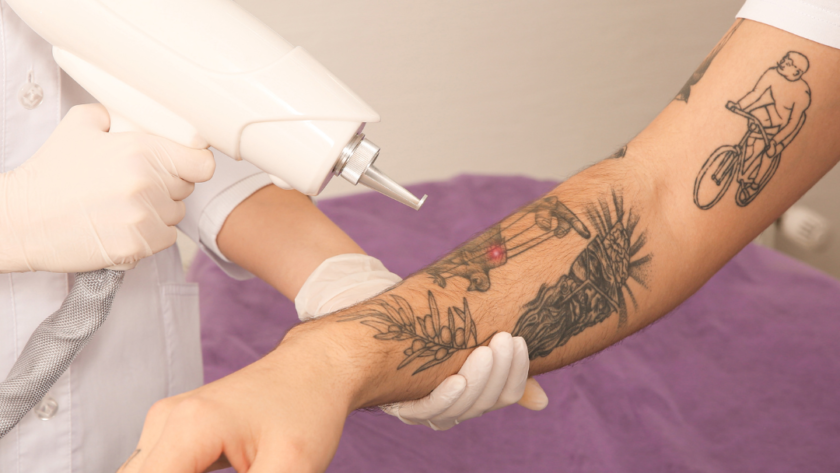Tattoo removal is a specialized process that can vary depending on different skin types. Each skin type presents unique considerations and challenges when it comes to effectively and safely removing tattoos. In this article, we will explore the specific factors that need to be taken into account for tattoo removal on different skin types and discuss the challenges involved.
Fitzpatrick Skin Typing
The Fitzpatrick scale is commonly used to classify different skin types based on their response to UV light and their pigment production. It categorizes skin into six types:
- Type I: Very fair skin that burns easily and rarely tans.
- Type II: Fair skin that burns easily and tans minimally.
- Type III: Medium skin that burns moderately and tans gradually.
- Type IV: Olive skin that burns minimally and tans well.
- Type V: Brown skin that rarely burns and tans easily.
- Type VI: Dark brown or black skin that never burns and tans easily.
Considerations for Different Skin Types
- Type I and II Skin: Fair skin types are prone to pigmentary changes, such as hypopigmentation or hyperpigmentation, during Austin tattoo removal. Extra caution should be taken to minimize the risk of these complications.
- Type III and IV Skin: Medium to olive skin types have a moderate risk of pigmentary changes. Laser settings should be carefully adjusted to ensure optimal removal while minimizing the risk of adverse effects.
- Type V and VI Skin: Darker skin types require special attention during tattoo removal. Q-switched lasers with longer wavelengths may be necessary to minimize the risk of pigmentary changes, such as post-inflammatory hyperpigmentation.
Challenges for Tattoo Removal on Different Skin Types
- Pigment Variation: Different tattoo ink colors respond differently to laser treatment on various skin types. Darker colors, such as black or blue, generally respond better, while lighter colors, like yellow or green, may be more challenging to remove.
- Risk of Hypopigmentation and Hyperpigmentation: People with lighter skin types (I-III) have a higher risk of hypopigmentation, which is the loss of skin color, while those with darker skin types (IV-VI) are more prone to hyperpigmentation, which is an overproduction of pigment. Proper laser settings and conservative treatment approaches can help mitigate these risks.
- Melanin Absorption: The concentration of melanin in the skin affects laser absorption. Darker skin types have higher melanin levels, which can absorb more laser energy and increase the risk of adverse effects. Careful consideration of laser settings and appropriate cooling measures are crucial to minimize complications.
Conclusion
Tattoo removal on different skin types requires careful consideration of individual characteristics and potential challenges. The Fitzpatrick scale provides a useful framework for understanding skin types and their response to laser treatment. By considering the specific factors and challenges associated with different skin types, practitioners can tailor tattoo removal approaches to achieve optimal results while minimizing the risk of complications. If you have concerns about tattoo removal on your specific skin type, consult with a qualified professional who specializes in tattoo removal to ensure safe and effective treatment.



